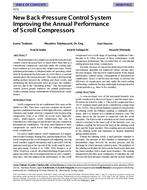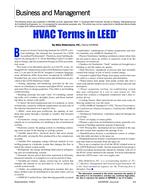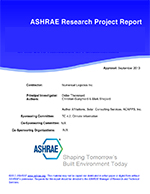The impact of urbanization on the microclimate of cities is substantial, caused by a rapid growth of populationespecially in urban areas. This issue leads to a concentration of anthropogenic activities associated with modifications ofland surfaces, leading to the formation of what is called “urban heat island” (UHI) phenomenon. The UHI causes outdoorthermal discomfort and is responsible for the increase of energy consumption, mainly cooling demands, in buildingslocated inside the urban canyon. The existing literature shows that this issue has been studied extensively in temperate andcold climates, concentrating on reducing heating energy demand; however, more investigation is needed in hot-aridclimatic zones, where the UHI intensity is aggravated leading to an increase of cooling energy demand. Thus, the purposeof the study is to understand the relationship between the urban form and energy consumption in urban areas located inhot-arid regions. The paper is an exploratory study to investigate and identify the principal descriptors of urban structuresthat impinge on the energy performance of buildings inside the canyon. To achieve the goal of the study, a rigorous analysisof the existing literature was performed for various climatic conditions to assess the influence of these descriptors on thelocal microclimate and energy consumption in buildings. It was found that there are three aspects of the urban canyon thatplay a significant role in influencing the local microclimate as well as energy consumption in buildings: the site coverage(determined by surface-to-volume ratio), the urban canyon density (determined by the building height to street width ratio(H/W) and sky view factor), and the orientation of streets and buildings inside the canyon. It was found that a sitecoverage of 60% leads to a potential reduction in cooling energy loads by 30%. In terms of density, it was reported that anaverage variation in the maximum air temperature during the day could reach up to 6°C (10.8°F) between deep andshallow canyons with H/W ratios of 9.7 and 0.6, respectively. With respect to orientation, it was observed that east-westoriented streets have the highest surface temperature of 40.5°C (105°F), compared to north-south and north-east/south-weststreets with ground surface temperatures of 39.35°C (102.8°F) and 38.85°C (100.4°F), respectively. Moreover, it was foundthat a west-facing wall is significantly higher than the ambient air temperature, reaching a maximum of 53°C (128 °F) at16:00.
Keywords: urban form; energy consumption; hot-arid climates; urban density; cooling energy
Citation: First International Conference on Energy and Indoor Environment for Hot Climates, Doha, Qatar, February 2014
Product Details
- Published:
- 2014
- Number of Pages:
- 11
- File Size:
- 1 file , 210 KB
- Product Code(s):
- D-2014FICEConf-4-3


